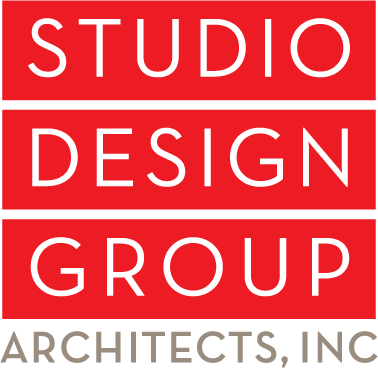
At Studio Design Group Architects in San Luis Obispo, we are constantly acquiring new skills, researching new ideas, and exploring new technologies. Keeping up with the tools that impact architecture and design helps us to continue creating the most beautiful and innovative buildings on the Central Coast.
In the past decade, advances in Virtual Reality (VR) and Augmented Reality (AR) have brought these technological tools out of the gaming and entertainment industries and into countless other applications.
While Virtual Reality is immersion in a virtual world – typically with a headset and computer – Augmented Reality projects virtual images over real-world images through your tablet or your phone’s camera, for example. This software is still in its infancy, and no doubt will be expanding its uses and capabilities as we head into the future.
Bringing Renderings to Life
In architecture, VR and AR’s practical applications are a natural progression from the use of 3D models and BIM software currently employed by most firms. The software allows architects to create panoramic, 3D renderings with meticulous detail and infinite flexibility.
Moving past the drawings and 3D models of the past, VR can help designers and clients visualize and collaborate on a digital device, from the schematic right up through construction. This technology is exciting for architects because it improves communication with the client and streamlines the collaboration process.
Architects in general are highly visual-spatial thinkers, but conveying that to others can sometimes be a challenge. With a VR headset, the client can walk through a space virtually, getting a room-scale experience, rather than just a presentation. Designers can adjust such details as lighting, furniture, and finishes – even change the perspective of the viewer – to give the client the most realistic mockup possible. Accurately described in this article from Autodesk, using VR, “architects can transmit not just what a building will look like, but also what it will feel like.”
Practical Applications in Healthcare Design
Augmented Reality is a great way to “see it in your space” when choosing furniture and finishes. In healthcare applications – especially the growing field of modular equipment – this could be helpful in planning a smaller scale remodel of an existing department, or a virtual mockup of patient care areas like exam rooms and ORs.
AR/VR can help administrators and other decision-makers to visualize the space and incorporate the ideal workflow and universal design principles that are especially important in hospital design. Walking through a 3D representation of a space can give healthcare professionals a preview of how a project will look, feel, and support the needs of patients and staff.
Here at Studio Design Group Architects, we are passionate about expanding our knowledge and resources so that we can offer you the most cutting-edge architectural and technological advances available today, and be ready for tomorrow.
If you would like to learn more about how Virtual Reality and Augmented Reality can help you bring your project to life, give our office a call at 805-541-3848 to schedule an appointment, or reach out to us here.
